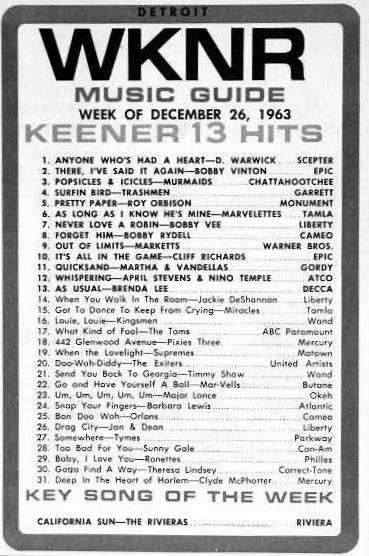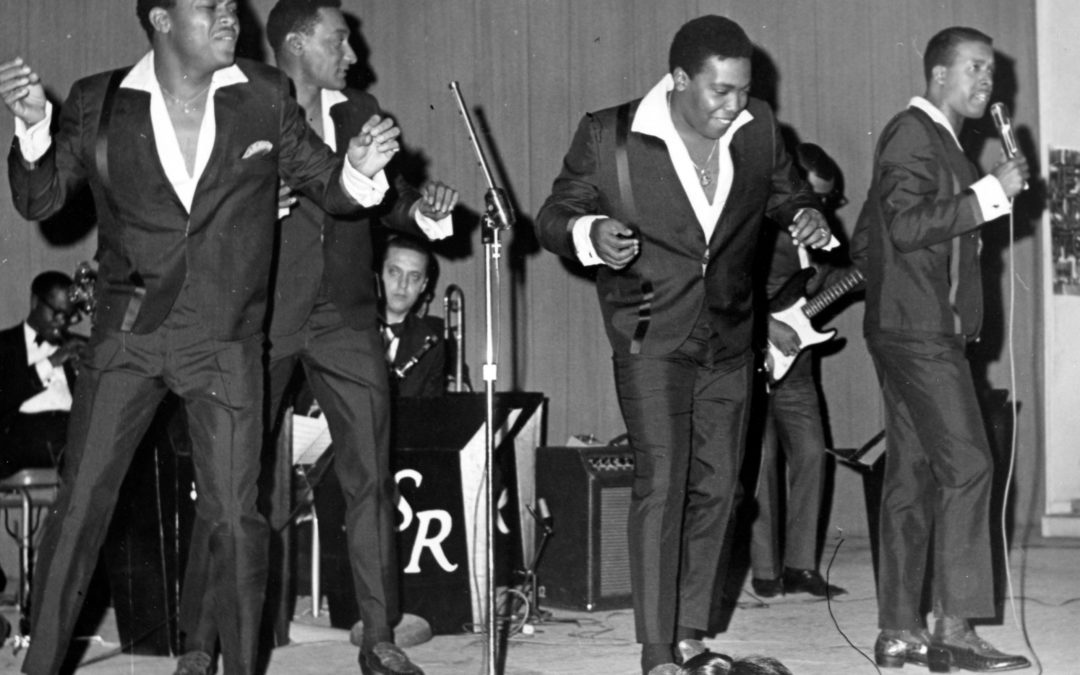 According to the WKNR Music Chart, fourteen out of the top thirty-one songs for that week were by black artists, led by the #1 song for the week by Dionne Warwick’s “Anyone Who Had a Heart.” That popular radio station featured all white disc jockeys with the famous Robin Seymour and Gary Stevens leading the way.
According to the WKNR Music Chart, fourteen out of the top thirty-one songs for that week were by black artists, led by the #1 song for the week by Dionne Warwick’s “Anyone Who Had a Heart.” That popular radio station featured all white disc jockeys with the famous Robin Seymour and Gary Stevens leading the way.
My favorites from the list?
- #1 – Anyone Who’s Had a Heart by Dionne Warwick
- #15 – Got to Dance to Keep from Crying by The Miracles
- #23 – Um, Um, Um, Um, Um by Major Lance
Want a trip down memory lane? Click the links for those songs and click the “sample this song” button for a quick listen.
A couple of thoughts cross my mind as I reflect on this old chart that I found in a container of memories that I saved from the “good ole days.” Don’t kid yourself. I am sure that somewhere, whether in your attic or basement or perhaps in your parent’s home, there are these “treasures” as well. If not, too bad; finding these memories and going back to those times is a lot of fun. In fact, pause your lives for a couple of hours and go look for yours.
The first thought that I pondered was how great it was to see the mixture of white and black artists being so popular at that time. Certainly the parallel lines of music had been intersected in 1963 but not for that long. On the same chart, you have Bobby Rydell, Roy Orbison, and Bobby Vee sharing success with the Marvelettes, Martha and the Vandellas, and the Miracles.
Our book Black Like You and Me, comments on the point that sports and music help to bring the races together. This old chart certainly supports that assertion. You have to realize that music ran along parallel lines forever with Blacks with their music and Whites with theirs. On the Ed Sullivan Show, the extremely popular television show for white viewers during the 1950s and 1960s, rarely featured a black performer and did not attract a black audience unless, and this was often the case, there was nothing else to watch. Somehow the pasty faced dancers and accordion music did not appeal to Blacks. Soon, this type of music was cast aside by the new generation of whites as well. The music lines were crossed.
The other thought that was triggered by this 1963 WKNR chart was the courage shown my white teenagers and the acceptance and openness shown by black teenagers during the 1960s. Cookie Marsh pointed out to me something that I really had not noticed about the album covers of black artists during this time. In order to “hide” from their parents what their white children were buying, the album covers did not feature black faces. Cookie indicated that on a Miracles’ cover, there was a picture of a monkey for the smash hit “Mickey’s Monkey” that crossed the racial lines. There was no picture of Smokey Robinson or any of the Miracles’ group.
In our book, we mentioned the Motown Review at the Fox Theater in downtown Detroit, Michigan. These were all black performers delivering the Motown Sound. As I mentioned in the book, I personally never attended. I regret that decision. However, I know of many white teenagers who did attend. They were not shunned by the black community. They did not have to sit up in the isolated balcony that blacks had to sit in at movie theaters not so long before. All were welcome; all enjoyed this music that helped move the races closer together.
All these thoughts from a little piece of paper printed well over fifty years ago. Dig into your old treasures. I am sure you will have a great time doing so.



love it!!